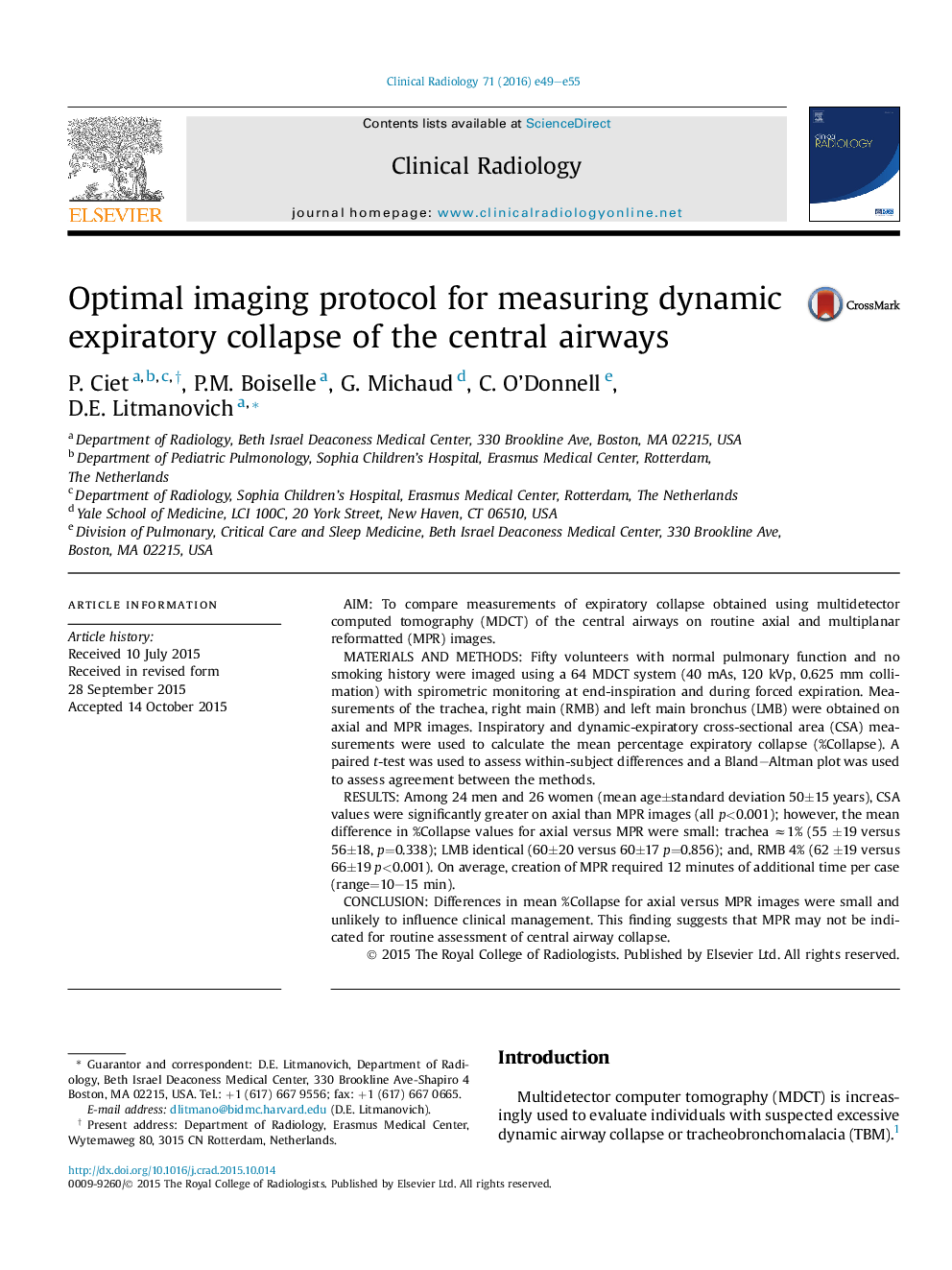| Article ID | Journal | Published Year | Pages | File Type |
|---|---|---|---|---|
| 3981448 | Clinical Radiology | 2016 | 7 Pages |
•Percentage expiratory airway collapse is similar when measured on axial and MPR images.•MPR images are thus not routinely indicated for assessment of central airway collapse.•MPR images are used in calculating absolute measurements of fixed airway stenosis.
AimTo compare measurements of expiratory collapse obtained using multidetector computed tomography (MDCT) of the central airways on routine axial and multiplanar reformatted (MPR) images.Materials and methodsFifty volunteers with normal pulmonary function and no smoking history were imaged using a 64 MDCT system (40 mAs, 120 kVp, 0.625 mm collimation) with spirometric monitoring at end-inspiration and during forced expiration. Measurements of the trachea, right main (RMB) and left main bronchus (LMB) were obtained on axial and MPR images. Inspiratory and dynamic-expiratory cross-sectional area (CSA) measurements were used to calculate the mean percentage expiratory collapse (%Collapse). A paired t-test was used to assess within-subject differences and a Bland–Altman plot was used to assess agreement between the methods.ResultsAmong 24 men and 26 women (mean age±standard deviation 50±15 years), CSA values were significantly greater on axial than MPR images (all p<0.001); however, the mean difference in %Collapse values for axial versus MPR were small: trachea ≈1% (55 ±19 versus 56±18, p=0.338); LMB identical (60±20 versus 60±17 p=0.856); and, RMB 4% (62 ±19 versus 66±19 p<0.001). On average, creation of MPR required 12 minutes of additional time per case (range=10–15 min).ConclusionDifferences in mean %Collapse for axial versus MPR images were small and unlikely to influence clinical management. This finding suggests that MPR may not be indicated for routine assessment of central airway collapse.
